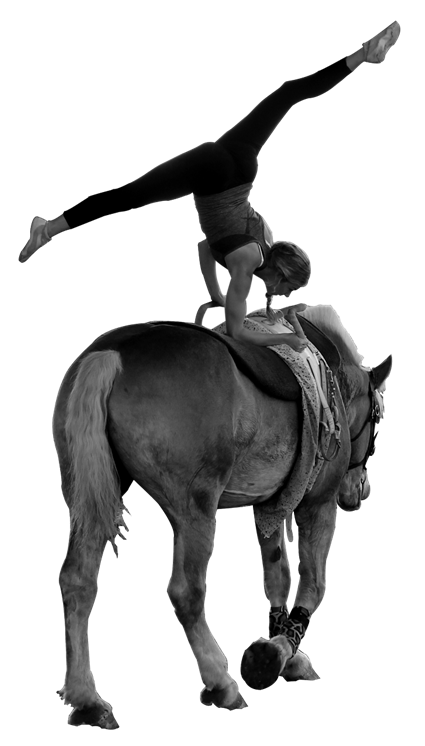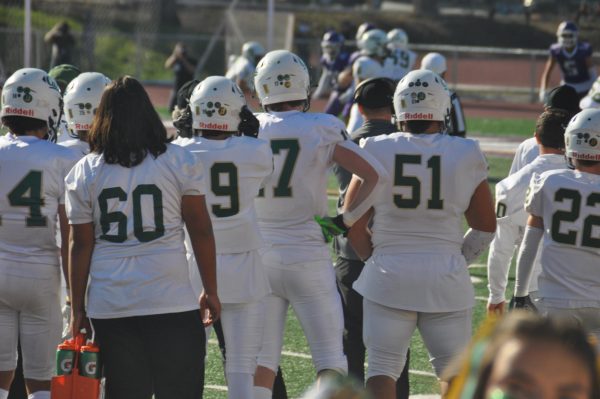On the Flip Side: Vaulting
You’ve seen people do a handstand. You’ve seen people do the splits. You’ve seen people do a flip. But have you ever seen someone do all three of these on a horse? Welcome to the world of equestrian vaulting. Originating in Europe, this sport has caught on in America and has spread to our campus. Vaulting is best described as gymnastics and dance on horseback.
The horse is a very important aspect to vaulting, cantering in circles while the athlete performs their routine The horse is not only the base for the vaulter, but also a crucial part to the scoring in the competitions. Bohrer-Hughes explains the importance of the horse in vaulting.
“You have to be really harmonized with the horse; it doesn’t feel good when you’re not in harmony with them. You need to have trust between you and your horse. It’s important to have a good horse and make sure they do well, because it really affects your score,” said Bohrer-Hughes.
Competitions in vaulting aren’t your typical school-sport games or meets. Traveling around the world for vaulting, Bohrer-Hughes shares some of the many places she competed at.
“We had nationals in August in Colorado, and I competed in Germany this summer. I trained there and I got to watch the world championships for juniors and team USA; before that I went to Canada.” said Bohrer-Hughes.
Bohrer-Hughes is not the only vaulting fan on campus; science teacher Kelley Holly is an avid vaulting aficionado.
“I was first introduced to vaulting back in 1978, started my own club in 1981, and have been coaching and vaulting ever since. I had never felt more in tune with my animal than when running alongside the horse and at the right moment springing up onto their back. Once I got the feel of being able to stand on the horse’s back and still have that same control and communication I was hooked,” said Holly.
Bohrer-Hughes agrees with Holly and has found other positive aspects to the sport of vaulting; she feels that it has caused her to be a more self-sufficient person.
“It [vaulting] is more doing a lot by yourself. With school sports everything is just set up for you, your coaches give you dates for games and an outfit, and you basically just have to show up for practice. But for vaulting, you have to go out of your way to find a club, you have to drive to the club,and you have to pay for the club; you’re more independent. Your coach helps you learn how to vault and how to be more balanced and graceful, but you have to put in the time and effort – it’s a lot more on you.” said Bohrer-Hughes
Similar to a “runner’s high,” vaulters experience a thrilling feeling while executing their complex moves on their horse. A certain fearlessness is needed in vaulting, as the sport requires an eagerness for trying new things.
“I like the adrenaline rush you get, that’s my favorite part. I’m pretty reckless and I’m always like ‘whatever, I’ll just try this handstand,’ and then I fall, which is okay because I fall a lot. I just like to try new things and get a new perspective.” said Bohrer-Hughes.












